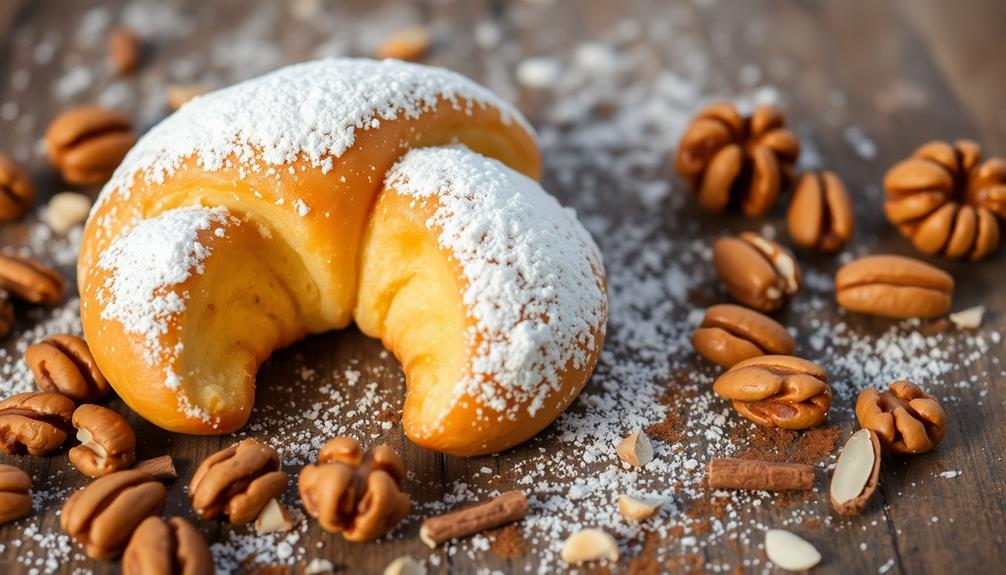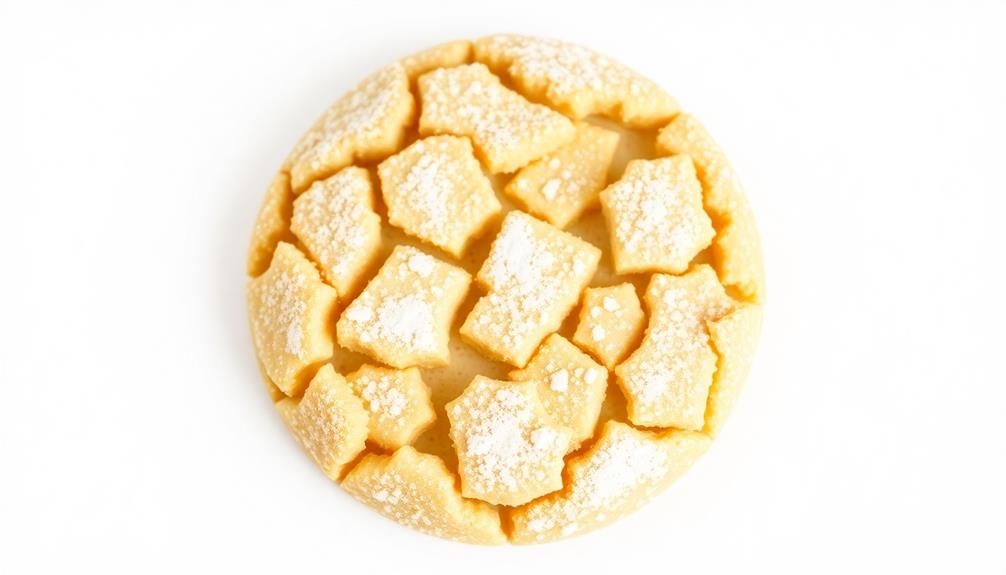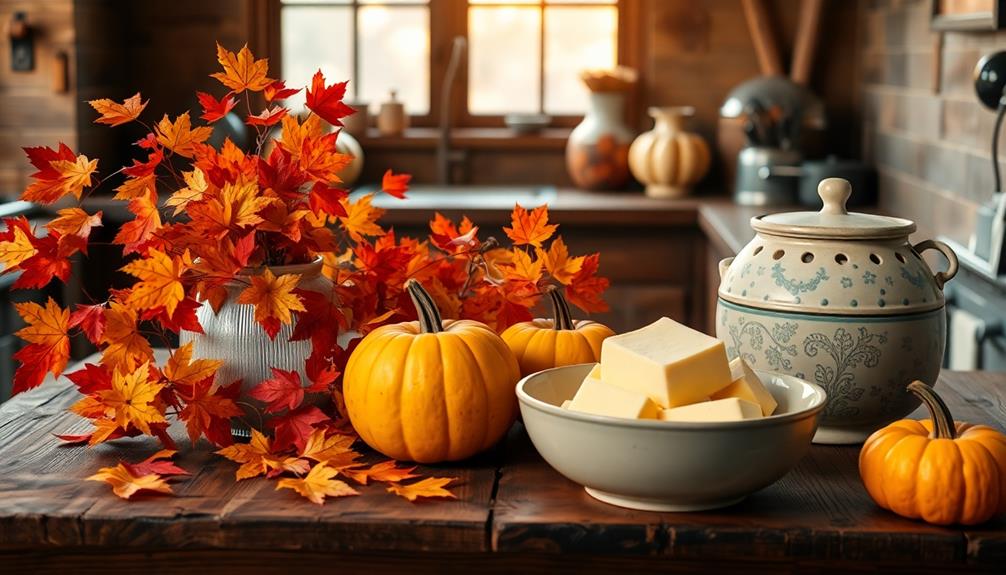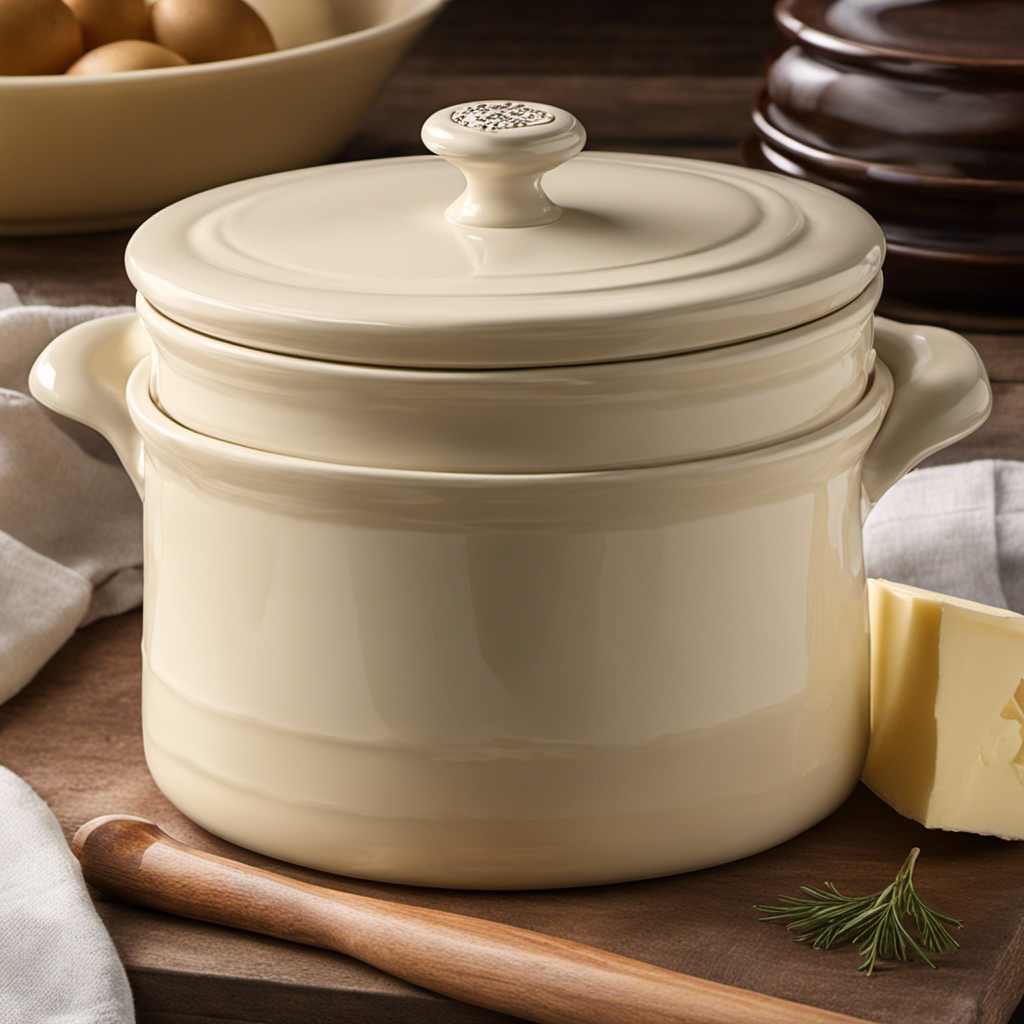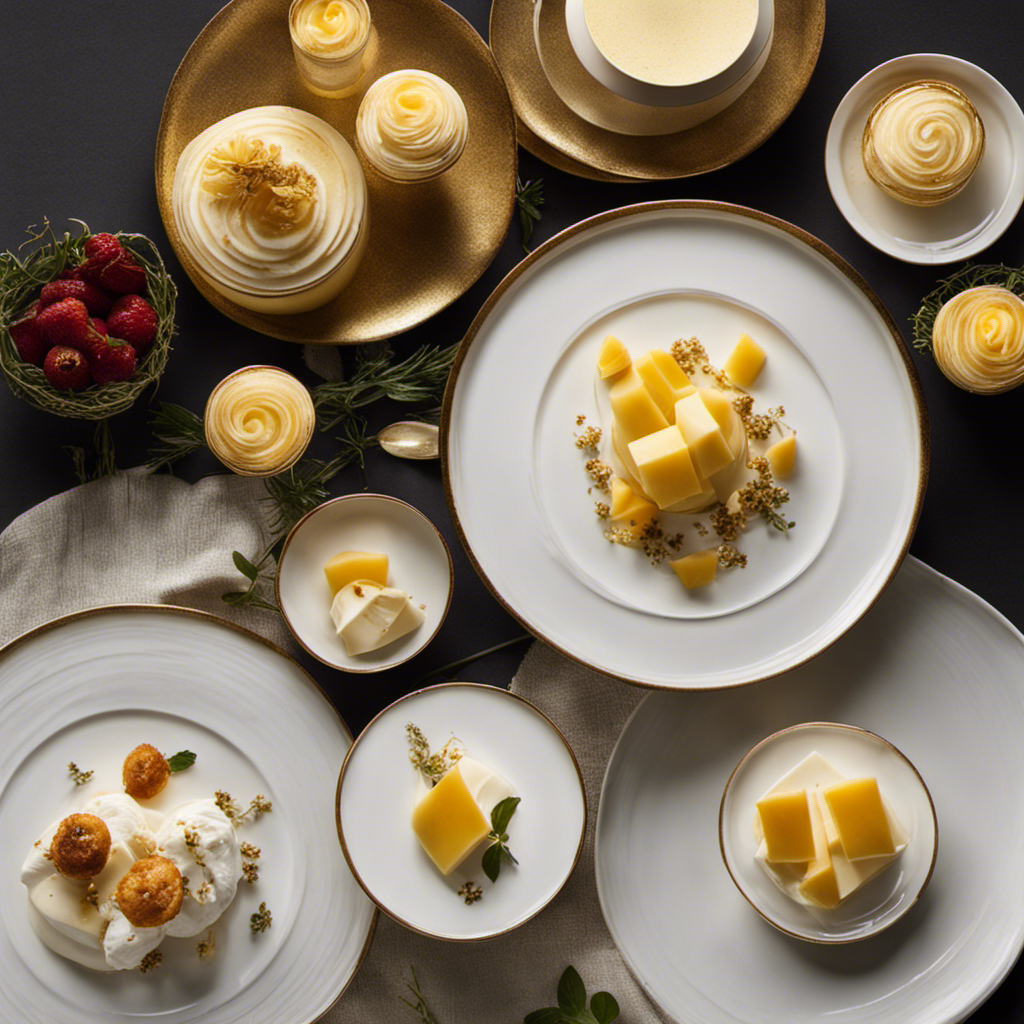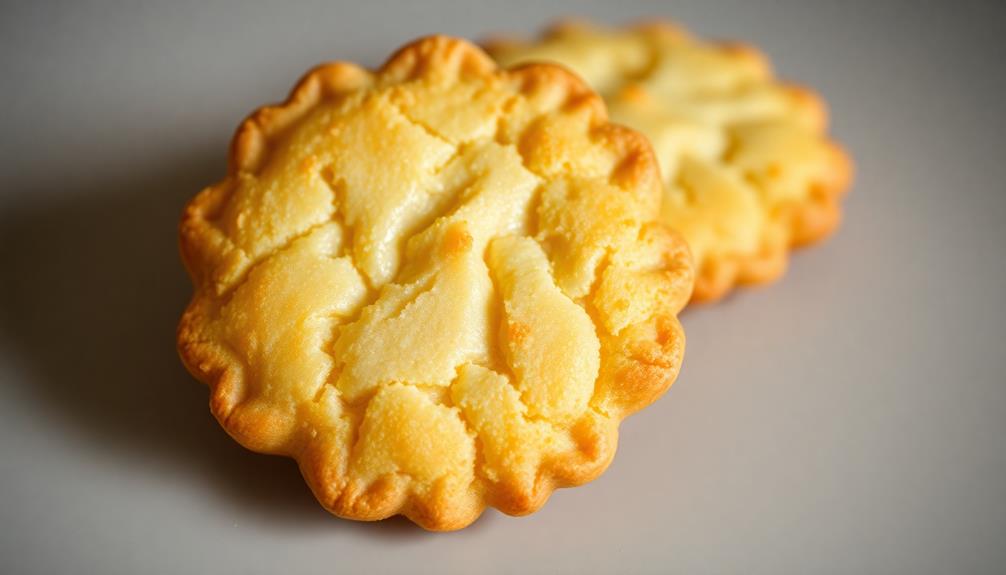Russian butter cookies are the delicate, buttery treats that'll elevate any occasion, from cozy gatherings to festive celebrations. With roots dating back to 18th century Russia, these cookies showcase the culinary prowess of Imperial Russia through their intricate, yet melt-in-your-mouth texture. Crafted with high-quality ingredients like unsalted butter, sugar, and flour, they come together in a silky batter that's gently baked until golden. Whether you enjoy them on their own or pair them with a warm beverage, these cookies are the perfect indulgence for savoring tradition and creating cherished moments with loved ones. Keep reading to learn the full history and a step-by-step recipe for these delightful Russian butter cookies.
Key Takeaways
- Russian butter cookies have a delicate, buttery texture and golden color, making them a traditional treat in Russian baking culture.
- These cookies originated in the 18th century and gained popularity with the expansion of the Russian Empire, showcasing the culinary prowess of Imperial Russia.
- The versatility of Russian butter cookies allows them to be enjoyed as a holiday treat, a snack, or paired with beverages like tea, fostering a sense of community and connection to Russian culinary heritage.
- The classic recipe features high-quality unsalted butter, sugar, egg, vanilla, flour, and salt, with the option to decorate them with sprinkles or powdered sugar for a festive touch.
- Baking Russian butter cookies requires skill and care, resulting in a melt-in-your-mouth sensation and an elegant, sophisticated presentation, making them ideal for personal enjoyment or gifting.
History
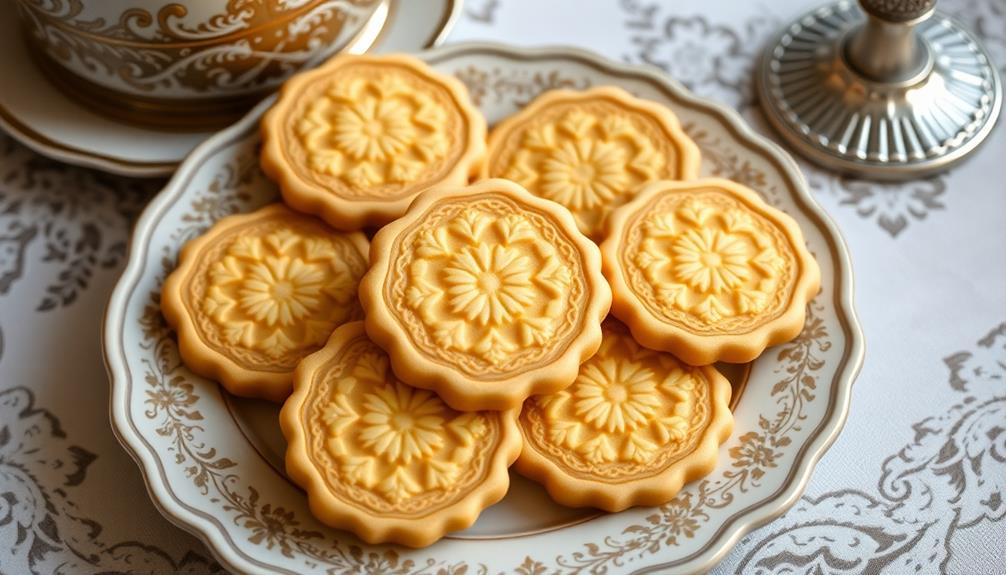
The origins of Russian butter cookies can be traced back to the 18th century, when they emerged as a delightful treat enjoyed by the aristocracy.
These delicate, buttery bites were a testament to the culinary prowess of Imperial Russia, as the nobility often showcased their wealth and status through the creation of intricate and indulgent confections.
As the Russian Empire expanded, the popularity of these cookies spread, becoming a cherished part of the country's rich cultural heritage.
Families passed down treasured recipes, each one reflecting the unique regional flavors and traditions that defined the diverse regions of Russia.
From the ornate, elaborately decorated varieties of the capital cities to the more rustic, homespun versions found in the countryside, Russian butter cookies have always been a reflection of the nation's vibrant and diverse culinary landscape.
Recipe
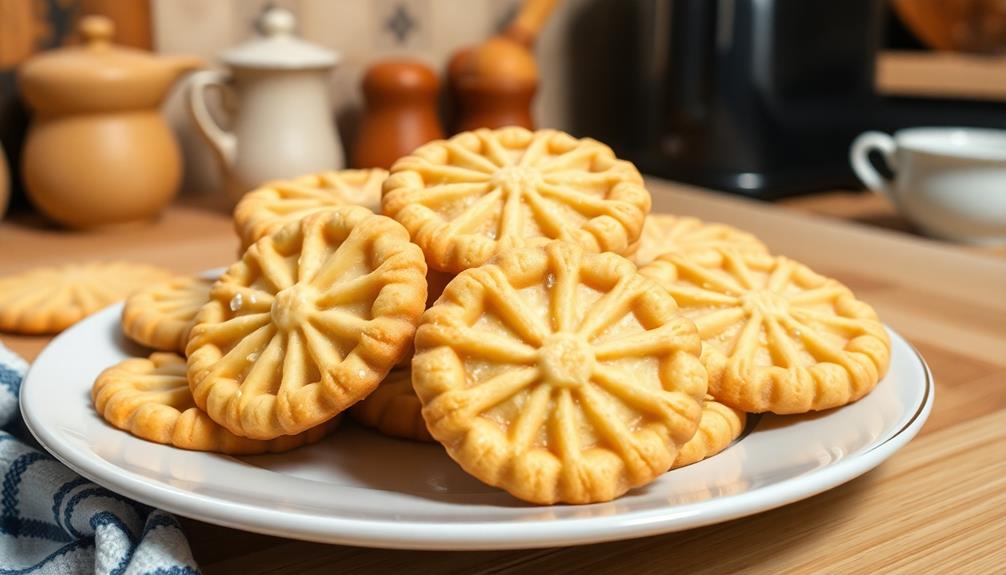
Russian Butter Cookies are a classic holiday treat that have been enjoyed for generations. These delicate, buttery cookies are perfect for sharing with family and friends during the festive season.
To ensure you have a solid financial plan to enjoy your holiday baking, consider setting aside a budget for your ingredients and treats, as a well-planned budget is essential for financial health.
The key to making these cookies is to use high-quality butter and to handle the dough as little as possible. This will ensure a tender, melt-in-your-mouth texture that's simply irresistible.
Ingredients:
- 1 cup (2 sticks) unsalted butter, softened
- 3/4 cup granulated sugar
- 1 egg
- 1 teaspoon vanilla extract
- 2 1/4 cups all-purpose flour
- 1/2 teaspoon salt
Instructions: Preheat your oven to 350°F (175°C). In a large bowl, cream the butter and sugar together until light and fluffy. Beat in the egg and vanilla extract until well combined. Gradually add the flour and salt, mixing just until the dough comes together. Chill the dough for at least 30 minutes.
When ready to bake, roll the dough out to 1/4-inch thickness on a lightly floured surface. Cut out shapes using cookie cutters and place the cookies on a parchment-lined baking sheet. Bake for 10-12 minutes, or until the edges are lightly golden. Allow the cookies to cool on the baking sheet for 5 minutes before transferring them to a wire rack to cool completely.
Tips: For best results, use room temperature butter and avoid overworking the dough. These cookies can be stored in an airtight container for up to 1 week.
Consider decorating them with colorful sprinkles or a dusting of powdered sugar for a festive touch.
Cooking Steps

Cream the butter and sugar together until light and fluffy.
Then, stir in the egg and vanilla for a rich, creamy base.
Gently fold in the flour mixture, taking care not to overmix, before chilling the dough and baking until lightly golden.
Step 1. Cream Butter and Sugar Together

Gently softening the butter in a large bowl, cream it together with the granulated sugar until the mixture becomes light and fluffy. Use a wooden spoon or a hand mixer on medium speed to blend the two ingredients, taking care not to overmix.
As you cream the butter and sugar, you'll notice the mixture transform from dense and grainy to smooth and airy. This creaming process incorporates tiny air pockets, which will create the delicate, melt-in-your-mouth texture of the Russian butter cookies.
Be patient and continue mixing for 2-3 minutes, scraping down the sides of the bowl as needed, until the mixture is light and fluffy. The butter and sugar should be well-incorporated, with no visible sugar granules remaining.
This creamed mixture forms the foundation of the cookie dough, so take your time to ensure it's perfect.
Step 2. Add Egg and Vanilla
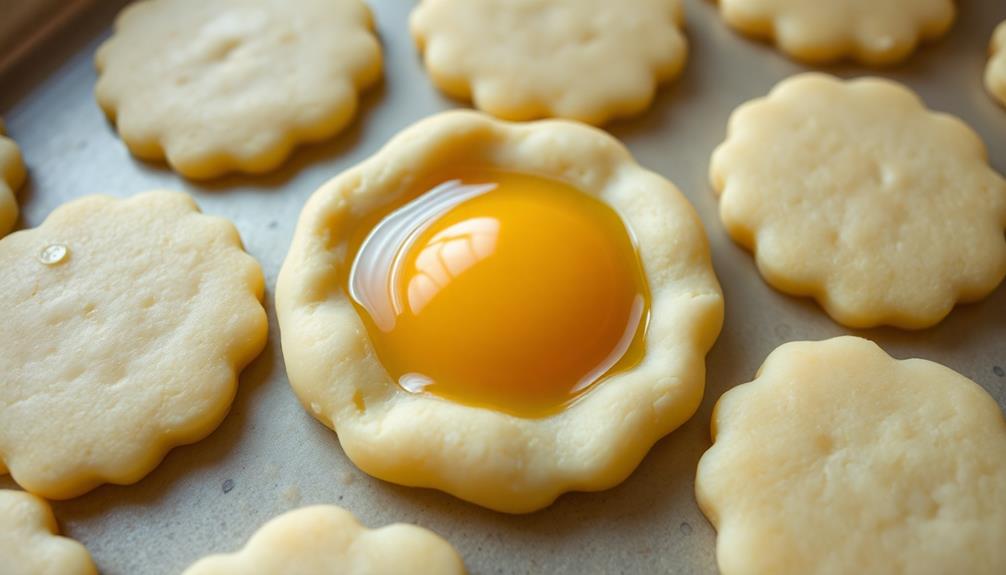
Next, crack the egg into the creamed butter and sugar mixture. Gently whisk it in, watching as the once-fluffy combination transforms into a silky, homogeneous batter. Incorporating an egg not only adds moisture but also contributes to the cookies' structure, making them perfectly tender.
Vanilla extract comes next, its fragrant essence infusing the dough with a warm, comforting aroma. As you slowly pour it in, the vanilla's sweet notes dance with the buttery richness, creating a harmonious balance of flavors. This delightful combination pairs beautifully with many low carb options for those mindful of their diet.
Pause to take a deep breath and appreciate the tantalizing scents wafting through your kitchen. This is the moment when the cookie dough truly comes alive, ready to be shaped into those delightful Russian butter cookies you've been craving.
With the egg and vanilla fully incorporated, the dough has gained a silky, pliable texture, perfect for rolling, shaping, and baking into golden, melt-in-your-mouth perfection. Get ready to fill your home with the irresistible scent of freshly baked cookies – it's time to move on to the next step!
Step 3. Fold in Flour Mixture Gently
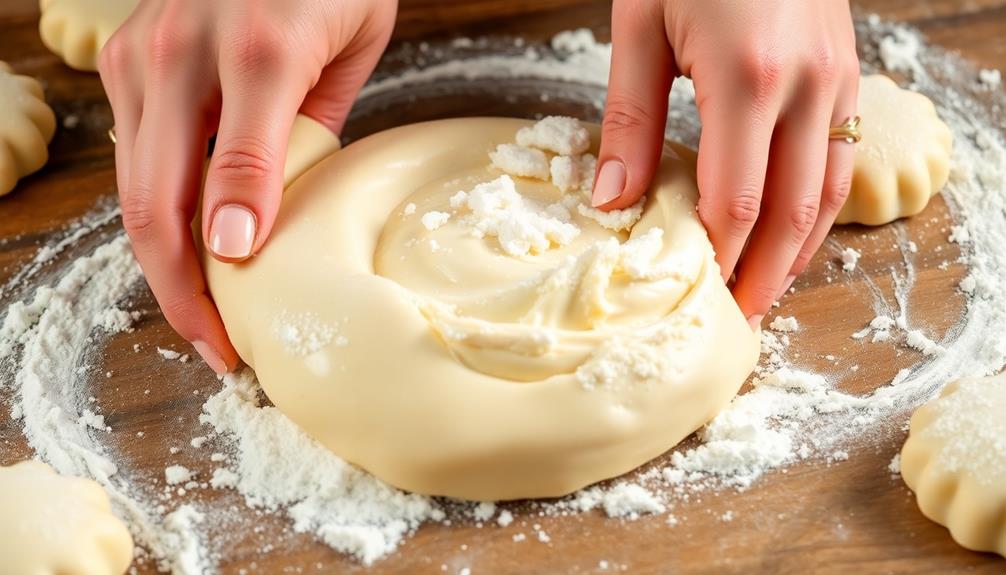
With the egg and vanilla thoroughly incorporated, it's time to gently fold in the flour mixture.
Grab your spatula and work in small, delicate motions, carefully incorporating the dry ingredients. Don't overmix – you want to preserve those airy pockets that will make your cookies wonderfully light and tender.
Slowly work the flour into the creamy butter, folding from the bottom of the bowl to the top. The dough should come together easily, forming a soft, pliable mass.
Be patient and mindful, taking your time to ensure the flour is evenly distributed without deflating the precious air bubbles. Once the mixture is just combined, you're ready to scoop and bake these classic Russian butter cookies.
The gentle handling is key to achieving that melt-in-your-mouth texture we all love. Now, let's get scooping!
Step 4. Chill Dough Before Baking
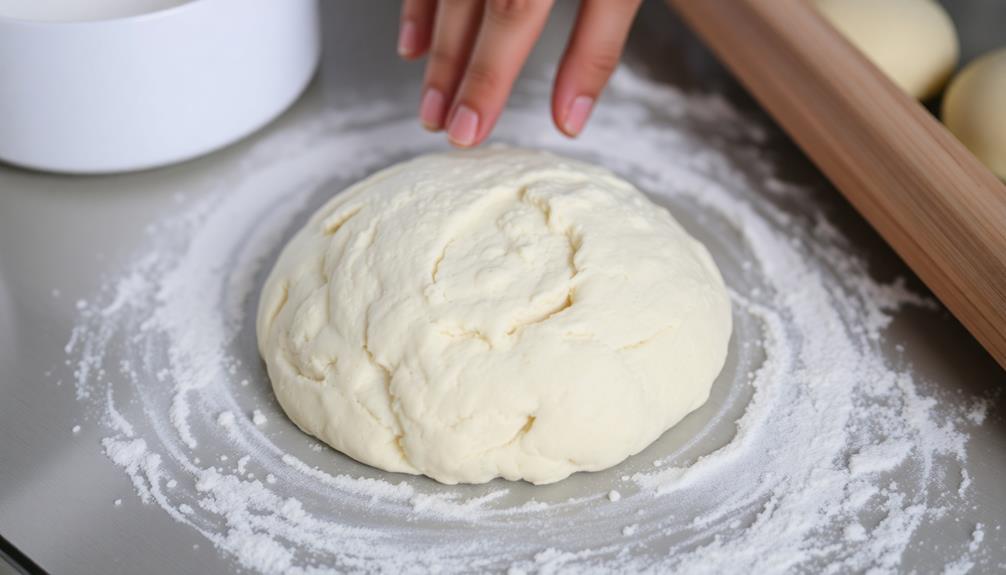
Once the dough has come together, it's time to chill it before baking. This chilling step is crucial for achieving the perfect Russian butter cookie texture.
You'll want to shape the dough into a disk, wrap it tightly in plastic wrap, and pop it in the fridge for at least 30 minutes, or up to 3 days.
Chilling the dough helps the butter firm up, which allows the cookies to hold their shape better during baking. It also gives the flour time to fully hydrate, resulting in a more tender, melt-in-your-mouth crumb.
As the dough chills, the flavors will also have a chance to meld, intensifying the rich, buttery taste.
Once the dough is sufficiently chilled, you can start preheating your oven and preparing your baking sheets.
This simple step of patience and planning will pay off in the end, delivering you a batch of perfectly shaped, deliciously tender Russian butter cookies.
Step 5. Bake Until Lightly Golden
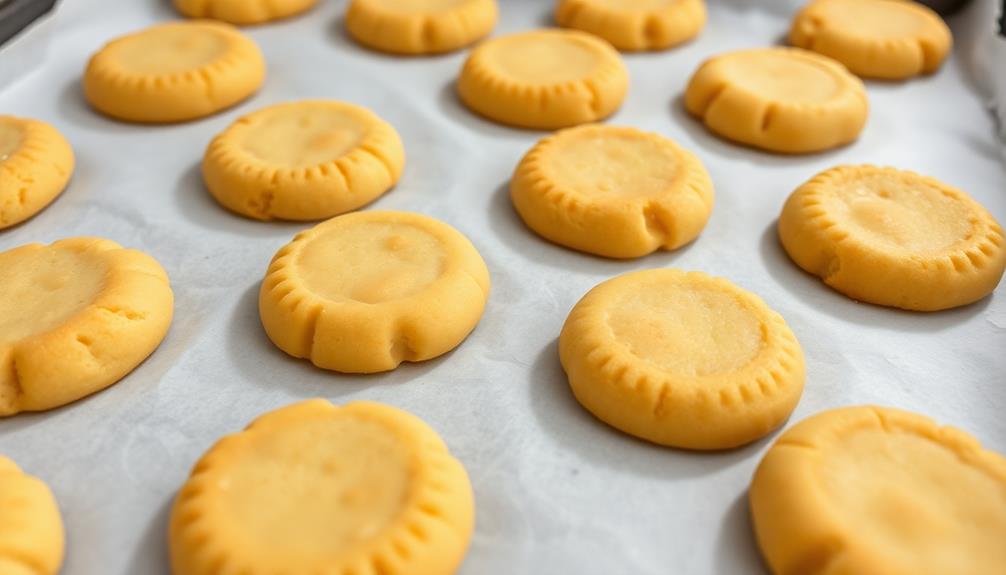
Preheat your oven to 350°F (175°C) and line a baking sheet with parchment paper.
Once your dough is chilled and ready, it's time to bake these delectable Russian butter cookies. Scoop tablespoon-sized balls of dough and place them about 2 inches apart on the prepared baking sheet. Gently press down on each ball to slightly flatten it, creating that classic round shape.
Slide the baking sheet into the preheated oven and let the cookies bake for 12 to 15 minutes. Keep a close eye on them, as you want the edges to just barely start turning golden brown. The centers should remain soft and buttery.
Remove the baking sheet from the oven, and let the cookies cool on the sheet for 5 minutes before transferring them to a wire rack to cool completely. The longer you bake them, the crispier they'll become, so keep a close watch to achieve that perfect lightly golden color.
Enjoy these melt-in-your-mouth Russian butter cookies!
Final Thoughts
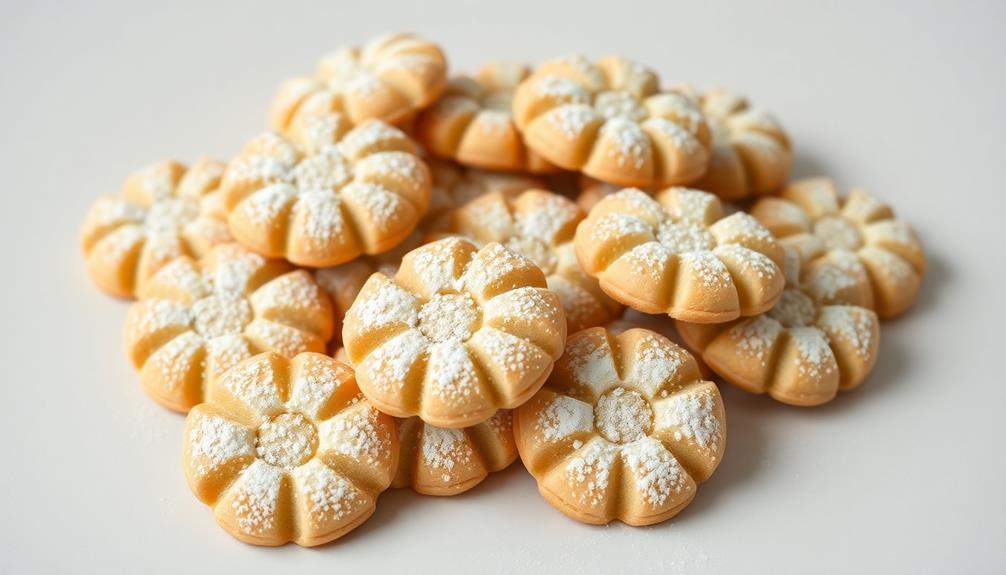
The Russian butter cookies you've prepared are a delightful treat to savor. Their delicate, buttery texture and golden hue make them a perfect indulgence for any occasion. As you take that first bite, the rich flavors melt in your mouth, leaving you craving more.
These cookies are a testament to the skill and care that goes into traditional Russian baking. Whether you're hosting a cozy gathering with friends or simply treating yourself to an afternoon pick-me-up, these cookies are sure to delight.
Their versatility means they can be enjoyed on their own, paired with a warm cup of tea, or even used as a base for creative desserts. The simple yet elegant presentation adds an air of sophistication, making them a wonderful gift or centerpiece for any celebration.
As you savor the last crumb, remember that these Russian butter cookies aren't just a delicious indulgence – they're a connection to a rich cultural heritage. Bake them with love, and share them with those you hold dear.
Frequently Asked Questions
Are Russian Butter Cookies Suitable for Vegans?
No, Russian butter cookies aren't suitable for vegans. They typically contain butter, which is an animal-derived ingredient. Vegans avoid all animal products, so they'd need to find a vegan-friendly alternative to enjoy a similar cookie experience.
How Long Can Russian Butter Cookies Be Stored?
You can typically store Russian butter cookies for up to 2 weeks at room temperature in an airtight container. For longer storage, they can be frozen for 2-3 months. Be sure to let them thaw before serving.
Can Russian Butter Cookies Be Frozen for Later Use?
Yes, you can freeze Russian butter cookies for later use. They'll stay fresh for up to 3 months in the freezer. Just be sure to store them in an airtight container before freezing to keep them from drying out.
What Is the Origin of the Traditional Russian Butter Cookie Recipe?
The traditional Russian butter cookie recipe likely traces its origins to the culinary traditions of Imperial Russia, where butter-based pastries were a beloved part of the aristocratic table. Though the exact origins are unclear, the cookie's rich, delicate flavor endures.
Are There Any Variations to the Classic Russian Butter Cookie?
While the classic Russian butter cookie is a beloved staple, there are several delightful variations. You can experiment with different flavors like vanilla, almond, or citrus, or even try shaped cookies for a unique presentation.
